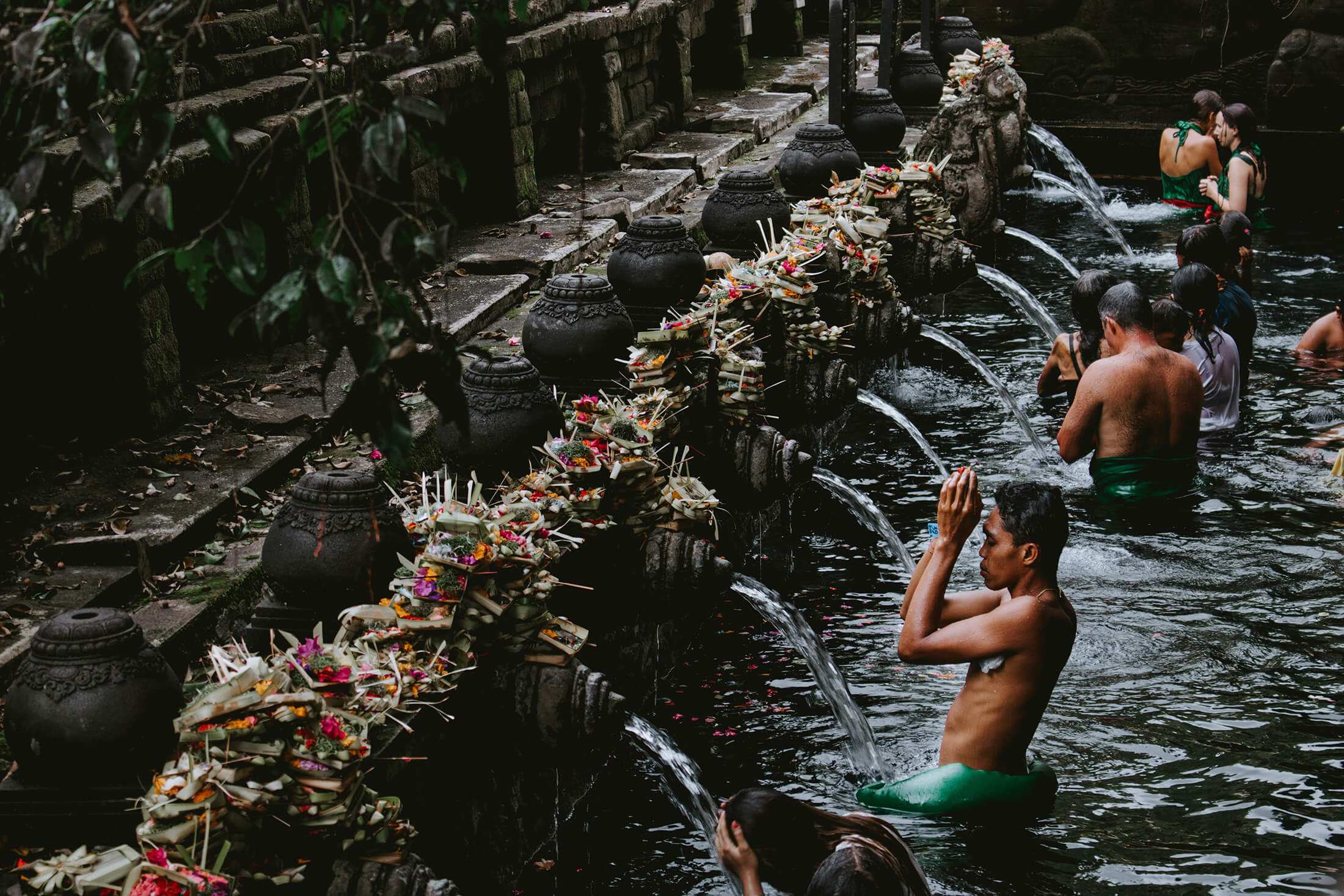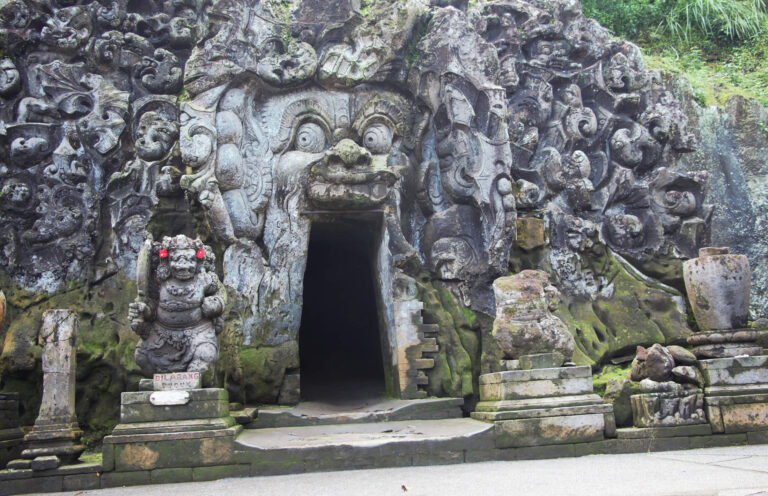Tirta Empul Temple: A Sacred Destination for Purification Rituals
Pura Tirta Empul Temple, often shortened to Tirta Empul, is a Hindu water temple located in the village of Manukaya in central Bali. The temple was built in the 10th century and is dedicated to Vishnu, one of the three main deities in Hinduism. The temple is famous for its holy spring water, which is believed to have healing powers and is used for purification rituals.
Tirta Empul is a fairly large complex consisting of several courtyards and pools, with the main pool being the most popular attraction. Visitors can observe and participate in the purification rituals, which involve bathing in the holy water and praying at the various shrines. The temple is also home to several other shrines and statues, including a statue of Garuda, the mythical bird that serves as Vishnu’s mount.
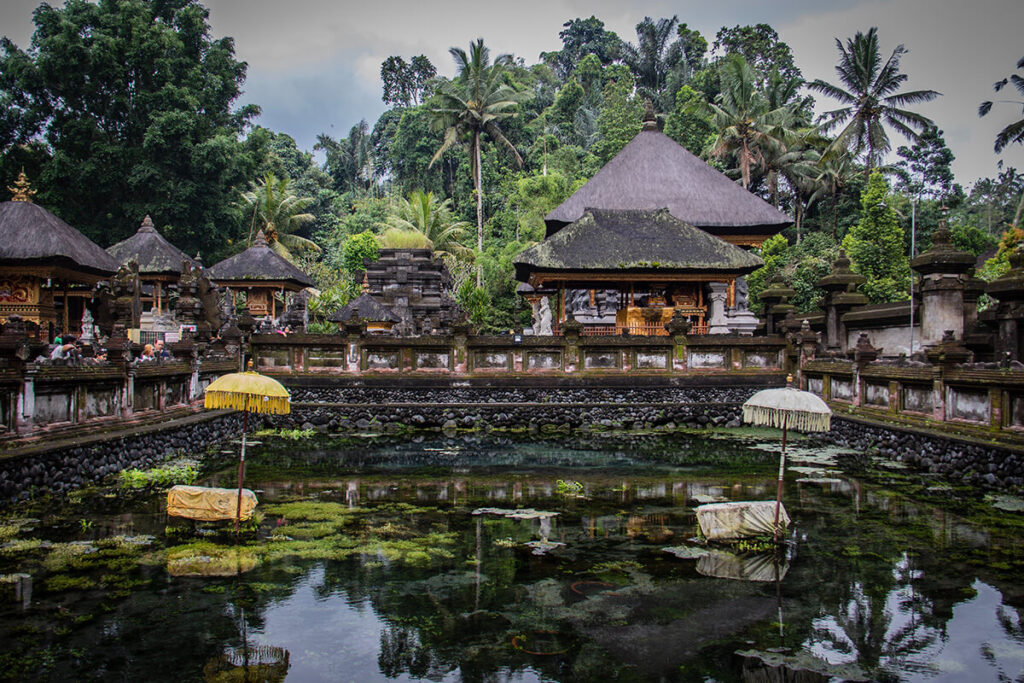
History
Origin of the Tirta Empul Temple
Tirta Empul Temple, also known as Tampaksiring Temple, was built in 960 AD during the Warmadewa dynasty, which ruled Bali from the 10th to the 14th centuries. The temple was founded by Mpu Kuturan, a Hindu sage who came from Java to Bali. It was built around a natural spring, which was believed to have magical healing powers. The spring was later named Tirta Empul, which means “holy water spring” in Balinese.
Significance of the Tirta Empul Temple
The Tirta Empul Temple is one of the most important Hindu temples in Bali. The temple is famous for its holy water, which is believed to have magical healing powers. The water is used for purification rituals, which are performed by Balinese Hindus to cleanse their body and soul. The purification ritual involves dipping the head under the water spouts, which are fed by the holy spring. The ritual is believed to wash away negative energy and purify the mind and body.
The Tirta Empul Temple is a popular tourist attraction in Bali, and visitors from all over the world come to see the holy water and experience the purification ritual. It is also a popular destination for Hindu pilgrims, who come to the temple to perform the purification ritual and pray to Vishnu.
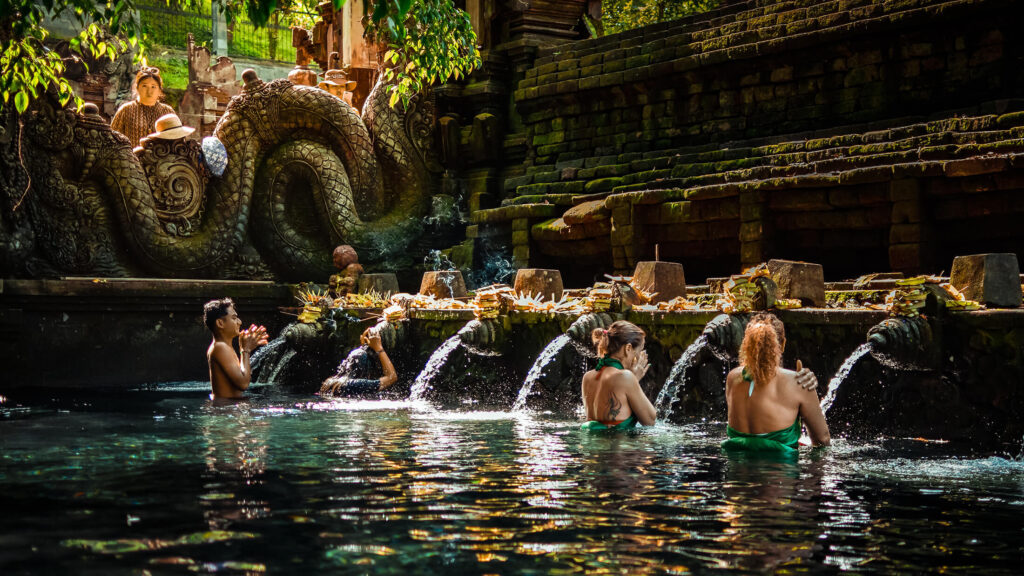
Architecture
Tirta Empul Temple is a beautiful and unique temple located in Bali, Indonesia. The temple is known for its stunning architecture, which is a blend of Hindu and Balinese styles. It has undergone several renovations over the years but the architecture and design remains a testament to the rich cultural heritage of Bali.
Layout of the Temple
The temple is divided into three main areas: the outer courtyard, the middle courtyard and the inner courtyard. The outer courtyard is the largest and is where visitors enter the temple. The middle courtyard is where the main shrines and pavilions are located, while the inner courtyard is where the holy spring is located.
The temple is surrounded by a large moat and the entrance is marked by a traditional Balinese gate. The gate is adorned with intricate carvings and sculptures, which are a common feature of Balinese architecture.
Be prepared to be faced with a number of market sellers and hawkers as tourist are guided through a thoroughfare of market stalls in order to leave the complex. Be patient and friendly with the sellers as they vie for your attention, they are just trying to survive and will be happy to share a joke with you as you filter by.
Structures within the Temple
One of the most notable structures within the temple is the main shrine, which is located in the middle courtyard. The shrine is a multi-tiered structure that is adorned with intricate carvings and sculptures. The shrine is dedicated to the Hindu god Vishnu and is a popular place of worship for locals and tourists alike.
The temple also has several pavilions, which are used for various ceremonies and rituals. The pavilions are adorned with intricate carvings and sculptures, and are a beautiful demonstration of the skilled craftsmanship of Balinese artisans.
Rituals and Traditions
Purification Rituals
The main draw for visiting Tirta Empul is to partake in a purification ritual, a ceremony central to the Hindu Balinese faith. The temple’s holy spring water is believed to have healing properties and is used in various purification ceremonies. One of the most popular rituals is the Melukat ceremony, where devotees immerse themselves in the holy water to cleanse their body and soul from their past lives as well as their present
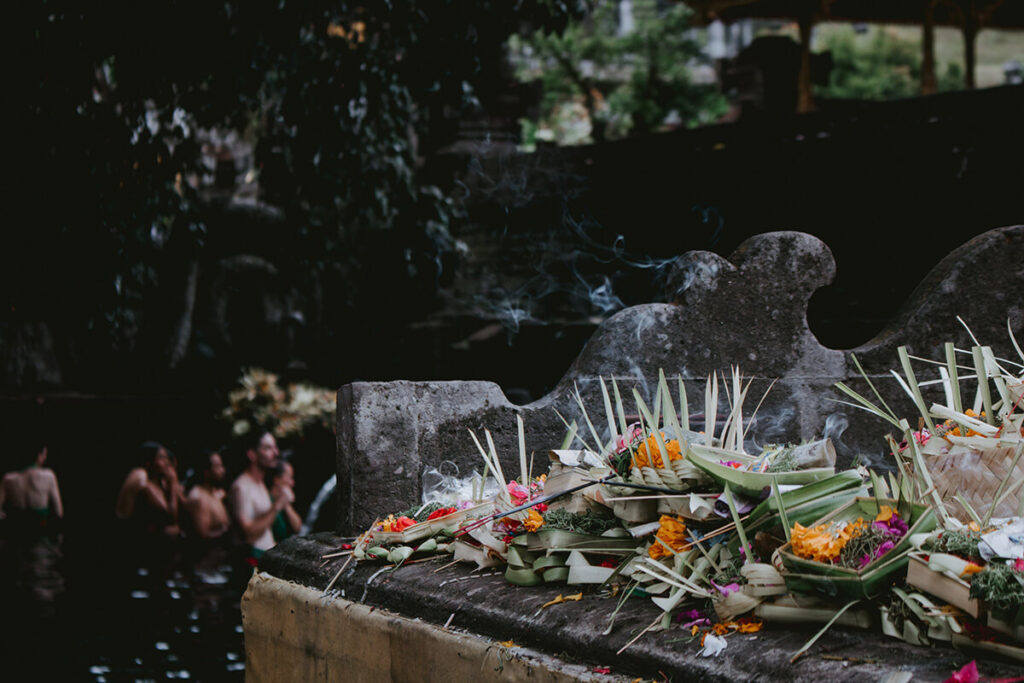
The purification process involves a series of prayers and offerings to the gods. A true Melukat ceremony will be led by a priest, who will guide the devotees through the cleansing process. The ceremony ends with a prayer for blessings and good fortune.
Other Religious Practices
Aside from purification rituals, Tirta Empul Temple is also known for its other religious practices. The temple is a popular destination for Hindus to offer prayers and make offerings to the gods. Visitors can also witness the daily rituals performed by the temple priests.
One of the most unique religious practices at Tirta Empul Temple is the “Ngaben” ceremony, which is a cremation ceremony. The Balinese believe that the ceremony is a way to release the soul from the physical body and guide it to the afterlife. The ceremony involves elaborate preparations, including the creation of a “bade” or a tower-like structure that carries the body to the cremation site.
Overall, Tirta Empul Temple is a significant religious site in Bali, offering a glimpse into the rich culture and traditions of the Balinese people.
The Significance of Vishnu
The temple is dedicated to Vishnu, who is one of the three main gods in Hinduism, alongside Brahma and Shiva, and is considered one of the most important deities in the Hindu pantheon. He is known as the preserver and protector of the universe, and his many incarnations, or avatars, are revered by Hindus for their role in maintaining the balance between good and evil.
Vishnu is often depicted as a four-armed deity holding a conch shell, a discus, a mace, and a lotus flower, and he is said to be responsible for maintaining the cosmic order, or dharma. Hindus believe that through devotion to Vishnu and his various forms, they can attain liberation from the cycle of reincarnation and achieve union with the divine. For many Hindus, Vishnu represents the ultimate source of goodness and the embodiment of divine love and compassion, making him a central figure in the spiritual lives of millions of people around the world.
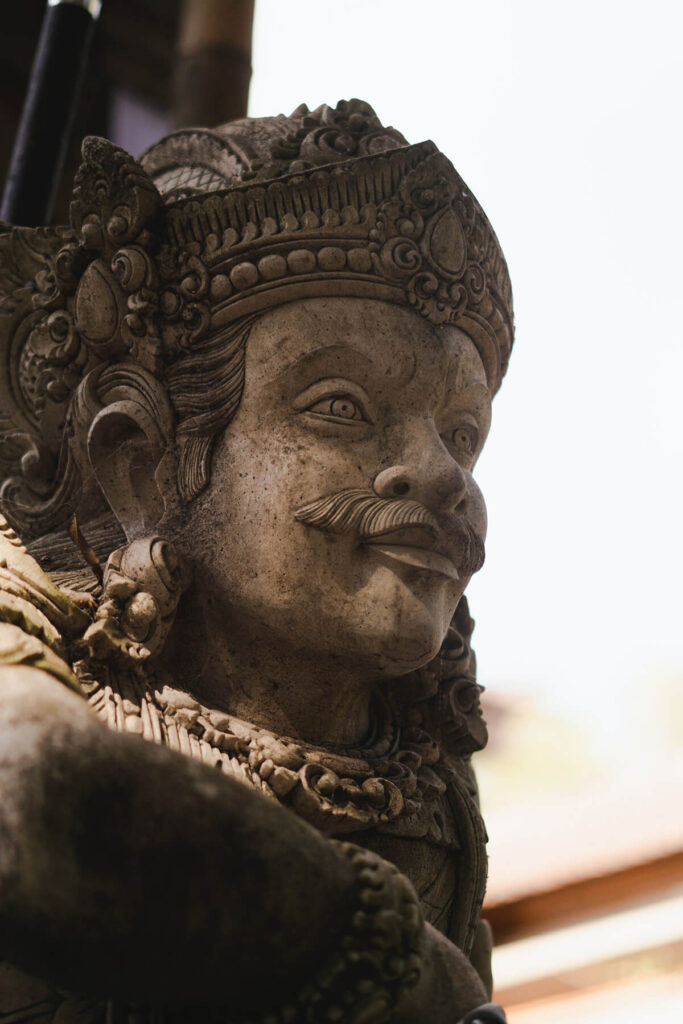
Insta-famous
To counter the religious significance of Tirta Empul as a religious site, it has become a wildly popular destination among Instagram users. With over 100,000 tags on the platform and over 70,000 photos on Google, the temple’s stunning natural beauty, rich cultural history, and spiritual significance have captivated visitors from around the world.
As with many of the best things in Bali the wave of spiritual commercialisation is present here as the significance of Tirta Empul as a tourist destination is starting to overshadow the importance it has as a pilgrimage site.
Iconic stone carvings and elaborate ceremonial structures surrounded by the crystal-clear water that fills the temple’s holy pools, Tirta Empul is a photographer’s dream come true. An irresistible glimpse into Balinese tradition, a peaceful moment of reflection, or simply a stunning backdrop for your latest Insta post, Tirta Empul is a must-visit destination for any traveller to Bali.
Just be prepared to wait to get your perfect shot at busy times.
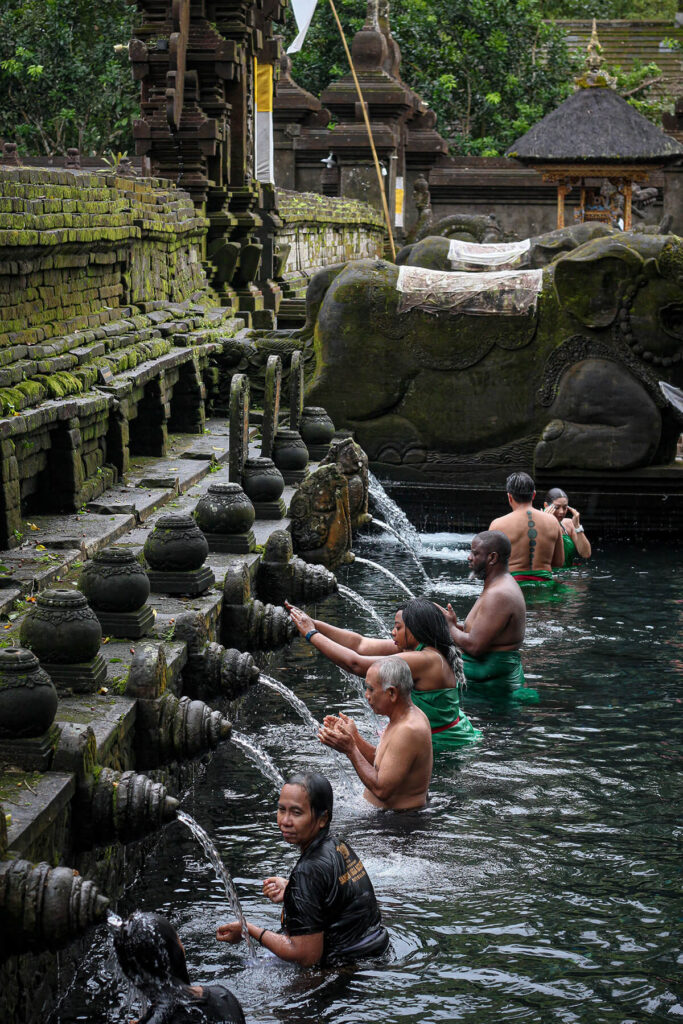
Visiting the Tirta Empul Temple
Opening Hours and Entrance Fees
The Tirta Empul Temple is open every day from 8:00 am to 6:00 pm. The entrance fee for adults is IDR 50,000, while children under 12 years old can enter for free.
What to Wear and Bring
Visitors must dress appropriately to enter the temple. Both men and women must wear a sarong to cover their legs and a sash around their waist. The sarong is free with the entrance fee.
However if you wish to bathe in its famous waters you are expected to hire a specific green or blue outfit which will cost an extra IDR 10,000. When bathing you can hire a locker for IDR 15,000
It is recommended to bring a change of clothes as you’ll want to dry off and change after you’ve purified your soul in the holy water. Comfortable walking shoes are also recommended as the temple grounds are quite extensive.
Etiquette and Behaviour
Visitors must behave respectfully when visiting the Tirta Empul Temple. The temple is a place of worship, and visitors must not disturb the rituals or take photographs during the ceremonies. Visitors must also remove their shoes before entering the temple and keep their voices low. It is also important to note that visitors are not allowed to swim in the holy water unless they are participating in a purification ritual.
Overall, visiting the Tirta Empul Temple is a unique and spiritual experience. By following these guidelines, visitors can ensure that they show respect for the temple and its customs.
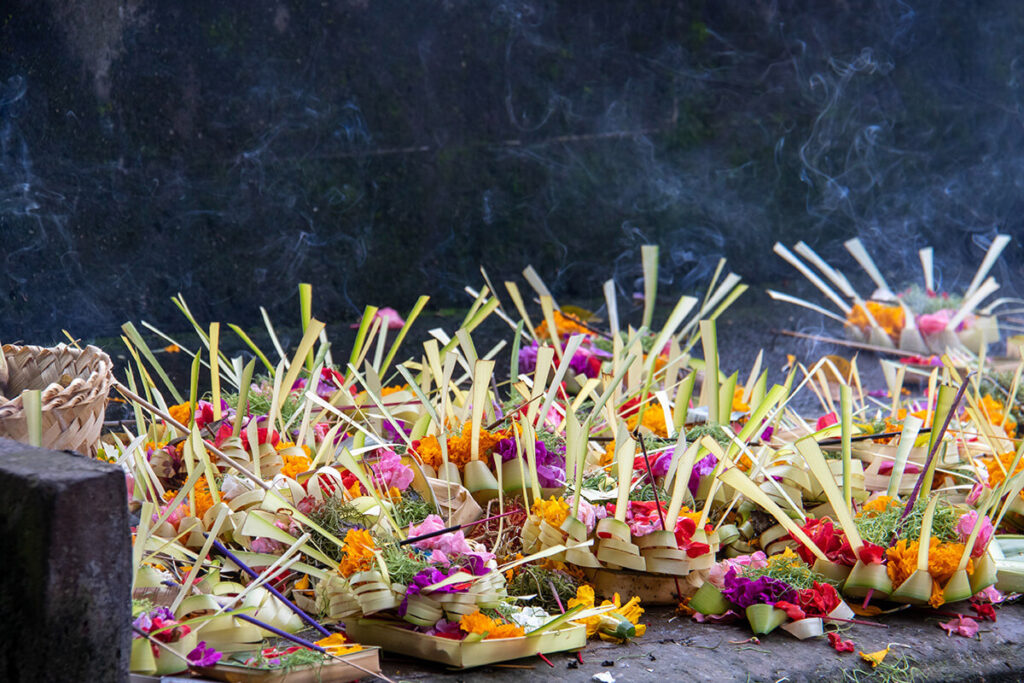
Nearby Attractions
Other Temples and Religious Sites
Visitors to Tirta Empul Temple may also be interested in exploring other temples and religious sites in the area. One such site is the Gunung Kawi Temple, which is located just a short drive away and far less crowded than Tirta Empul. This temple is known for its impressive rock-cut shrines, which were carved into the cliff face in the 11th century.
Another nearby temple worth visiting is the Goa Gajah Temple, which is also known as the Elephant Cave. This temple features a cave entrance that is carved to resemble the mouth of an elephant, as well as several impressive carvings and statues.
Natural Attractions
In addition to its many temples, the area around Tirta Empul Temple is also home to several natural attractions. One popular destination is the Tegalalang Rice Terrace, which features stunning views of the surrounding countryside and is a popular spot for hiking and photography.
Another nearby natural attraction is the Kanto Lampo Waterfall, which is located just a short drive from the temple. This waterfall is known for its stunning beauty and is another Insta-famous spot for influencers across the globe.

